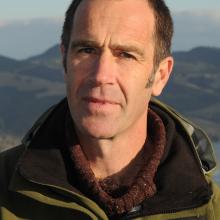

"Range anxiety" is a term commonly associated with electric vehicles and the zero-emission transport evolution. However, spare a thought for pilots trying to fly jets out of Auckland.
Damage from a digger has resulted in the only petrol, diesel and jet fuel supply line to Auckland being punctured, and range anxiety has taken on a whole new meaning. Politicians have even been riding on buses to economise. Flights have been cancelled, jet fuel rationed, motorists have been panic-buying fuel.
Oh, and by the way, that digger had apparently been excavating kauri logs in a wetland. Pause to think about that for a moment.
We usually take for granted the ready availability of petrol and fossil fuels. However, like the Auckland fuel supply line, our connection with fuel, for transport and industry, relies on long fragile supply chains. It also relies on general global political stability. Climate change is expected to change all that. Rationing of fossil fuels may become not a choice, but an obligation.
Many years ago, when my partner and I were footloose and fancy free, we found ourselves on a film set in Morocco.
At the end of filming we hitched a ride in a beautiful 1950s Cadillac convertible to cross the High Atlas Mountains. Fuel supply was not plentiful in the Atlas Mountains and that Cadillac was a thirsty beast. It was pretty cool travelling in the convertible, up until the point we ran out of fuel.
We managed to roll into some sort of mountain outpost and I recall the delicate siphoning of petrol from an old Renault 4 into a plastic water bottle for transfer into the Cadillac. For the rest of the journey down into Marrakesh we coasted as much as we could, eeking out the meagre supply of petrol so we could get to our destination.
More recently, I recall when our two local petrol stations in Blueskin Bay were shut down. The community began searching out fuel cans and some residents were well prepared with a full jerry can just in case. But many weren’t so organised and people often went asking around the neighbourhood for top-ups, or emptying the lawn-mower to recover a litre of the precious fuel. It’s little wonder now that so many residents in Blueskin Bay own electric vehicles.
Meanwhile at the international level, a bellicose and incoherent US president is demonstrably incapable of providing global leadership.
While a reduction in US power doesn’t necessarily mean global political instability, it certainly does mean fragility, and fragility in our political systems means fragility in our supply lines. Our civilisation relies on a fine balance of global politics in a world that is now urgently needing to adapt to climate change impacts. It is high time we built more resilient systems for energy supply, transport and all economic activity.
Our reliance on fossil fuels for transport (to concentrate just on transport for the moment) makes us very vulnerable to international forces outside our control and global and local natural disasters. And yet we have in New Zealand an abundant potential for renewable electricity generation and the technology to fully electrify land-based transport. And that offers us opportunity and options.
If central government accepts we need to act, it could bring to bear the resources of government to allow the organised and active transition to a fully electrified land transport system, working hand in hand with New Zealand industry, business and the community.
We already have some experience of working to manage our access to fossil fuels nationally. Carless days were introduced by the National Government in 1979. This legislation was an attempt to shore up the economy following the oil shocks of the 1970s. It was also incidentally, when many of the Think Big generation power stations were built.
In the future, if we get things right, fewer of us will drive and those who do will drive electric vehicles. A managed transition to a sustainable society will require the participation of and investment by central government.
What I hope to see is a distributed energy supply and integrated transport network based on renewable electricity generation. I can imagine for example, if I still drive a car, stopping near a local wind or solar farm for a quick high-power charge. A high-power charge means a DC capacity of up to 350kW which would enable a car battery to be back up to 80% from empty within a few minutes. Electric mobility goes hand in hand with distributed generation of course, and the amount of renewable electricity generation needed in New Zealand would have to double if we are to electrify transport, industry and heating.
And therein comes the rub. As project manager for Blueskin Energy Ltd, I’ve spent the last seven years of my life working on a community wind project that could have supplied 1000 households with renewable electricity. Many others have contributed very significant donations and pro bono effort towards this dream.
And yet, ultimately, the proposed Blueskin turbine has been ruled against by the Environment Court, primarily it appears, because of its visual impact. Perhaps others will find the mysterious "somewhere else" that is the perfect spot for community wind turbines. If they don’t and we continue down the same trajectory, range anxiety will be the least of our worries.
- Scott Willis is the project manager of Blueskin Energy Ltd. Each week in this column, one of a panel of writers addresses issues of sustainability.












